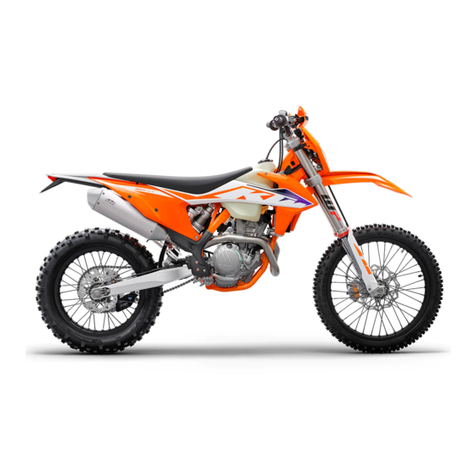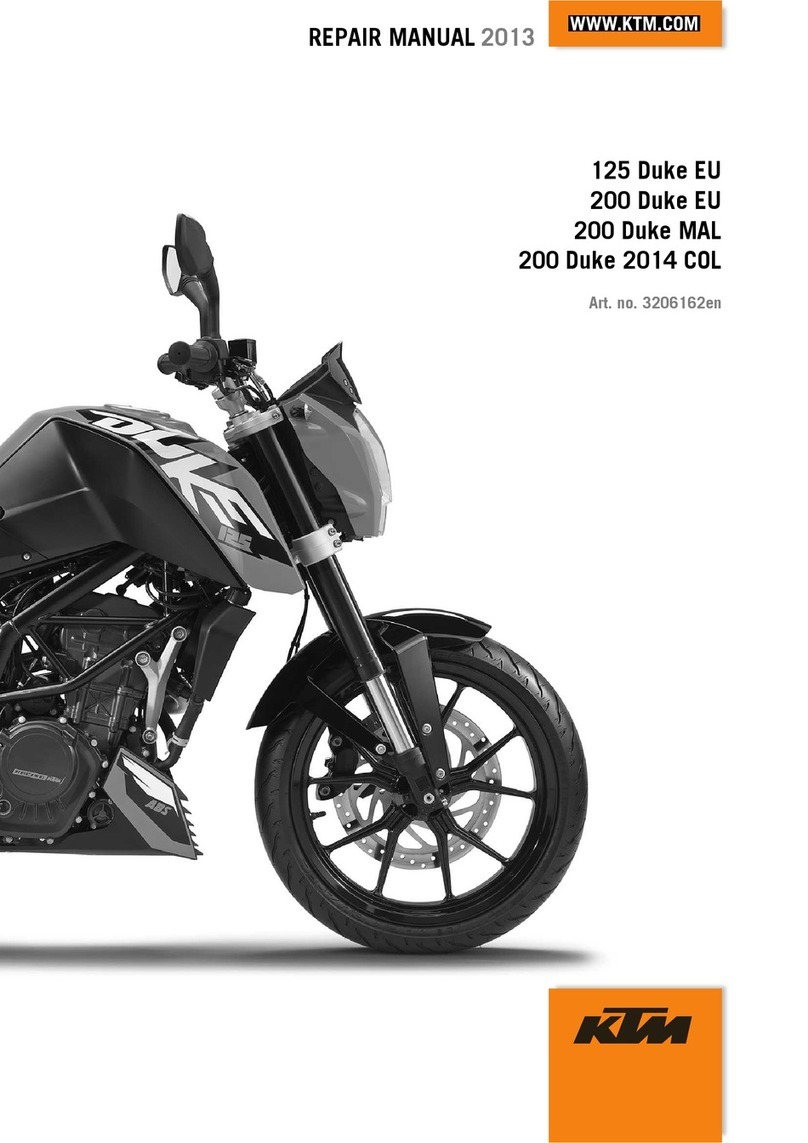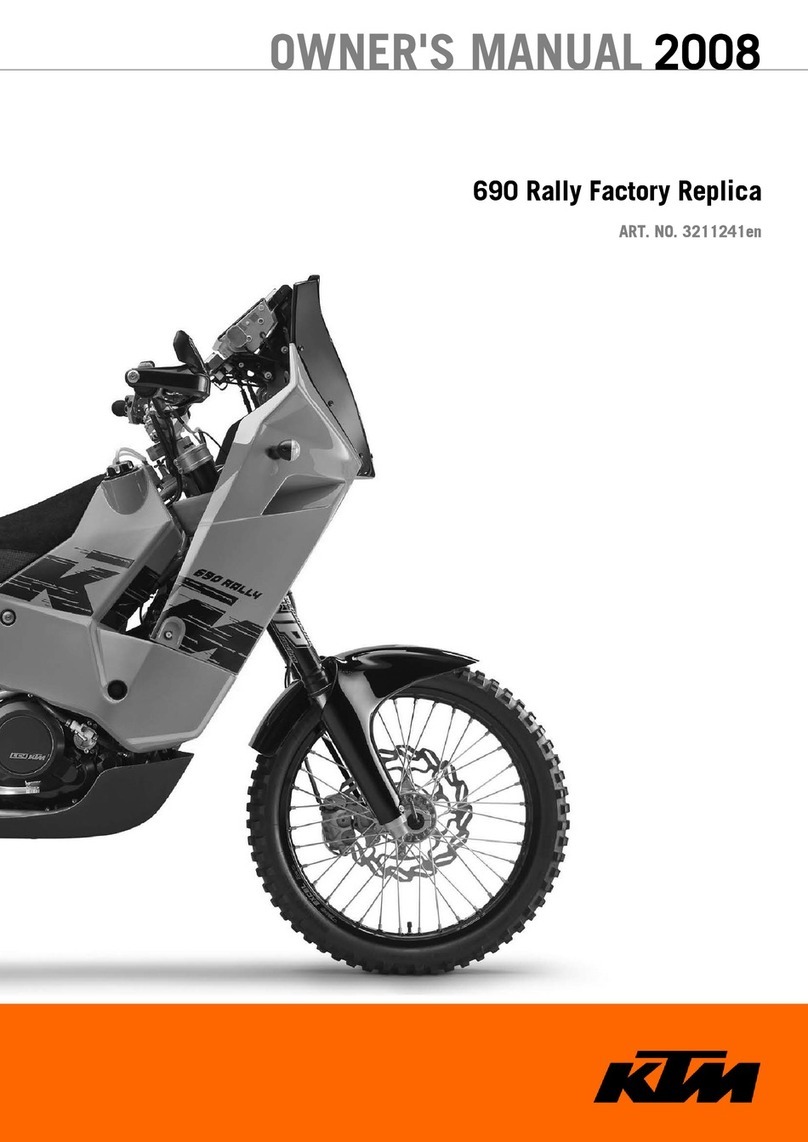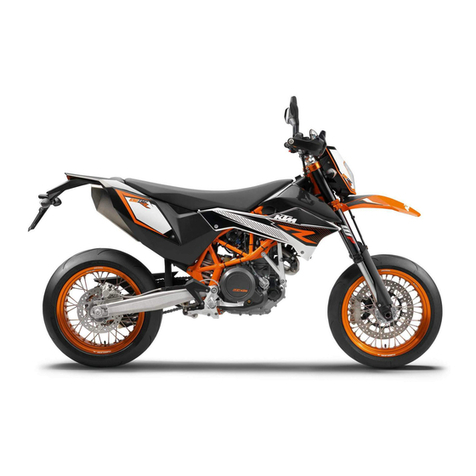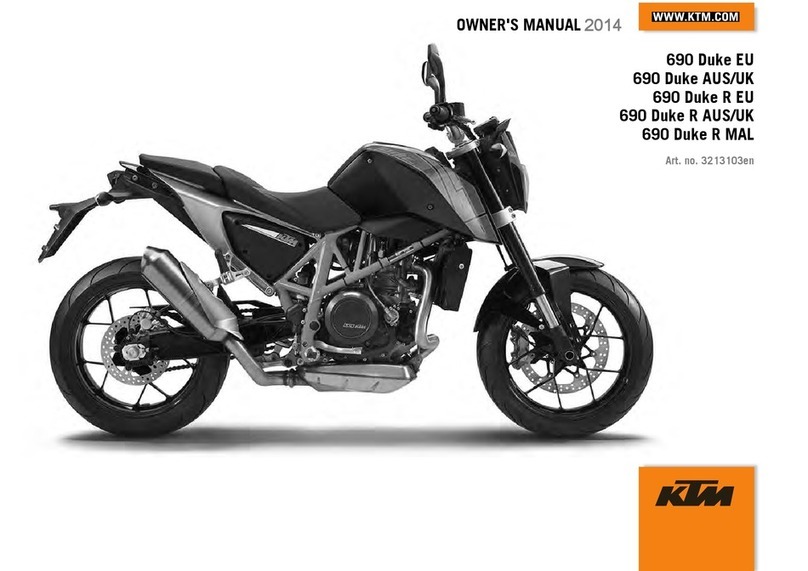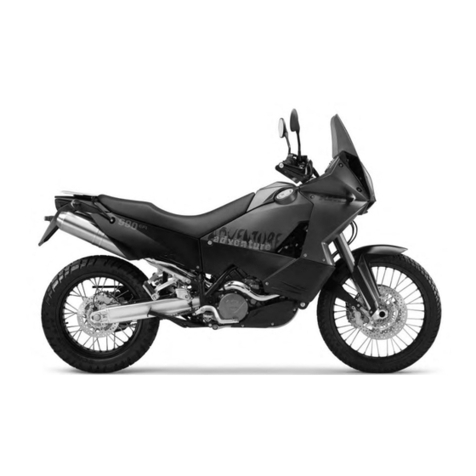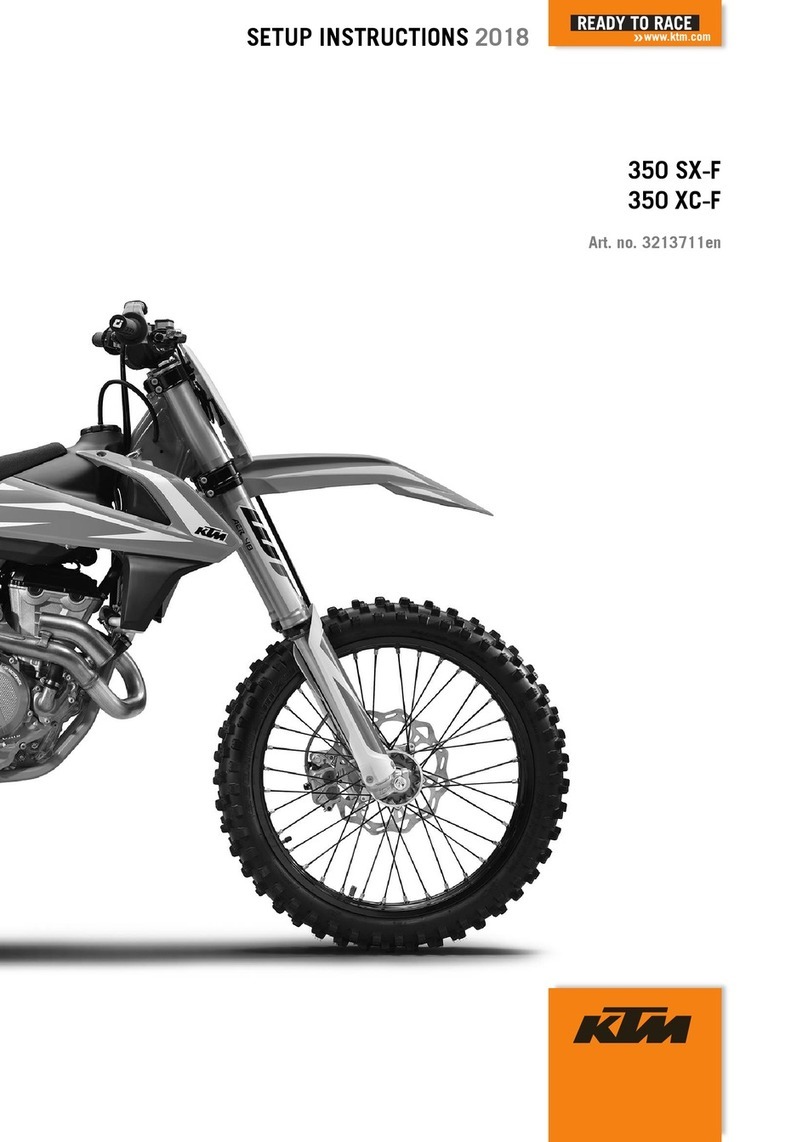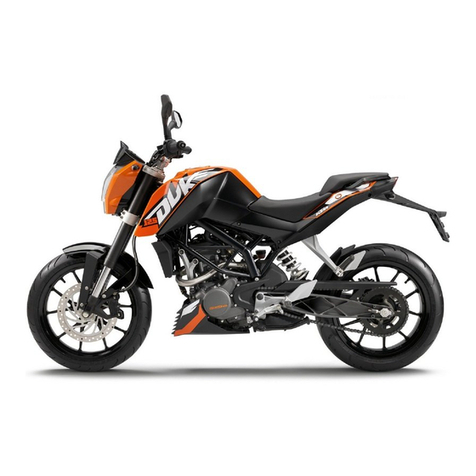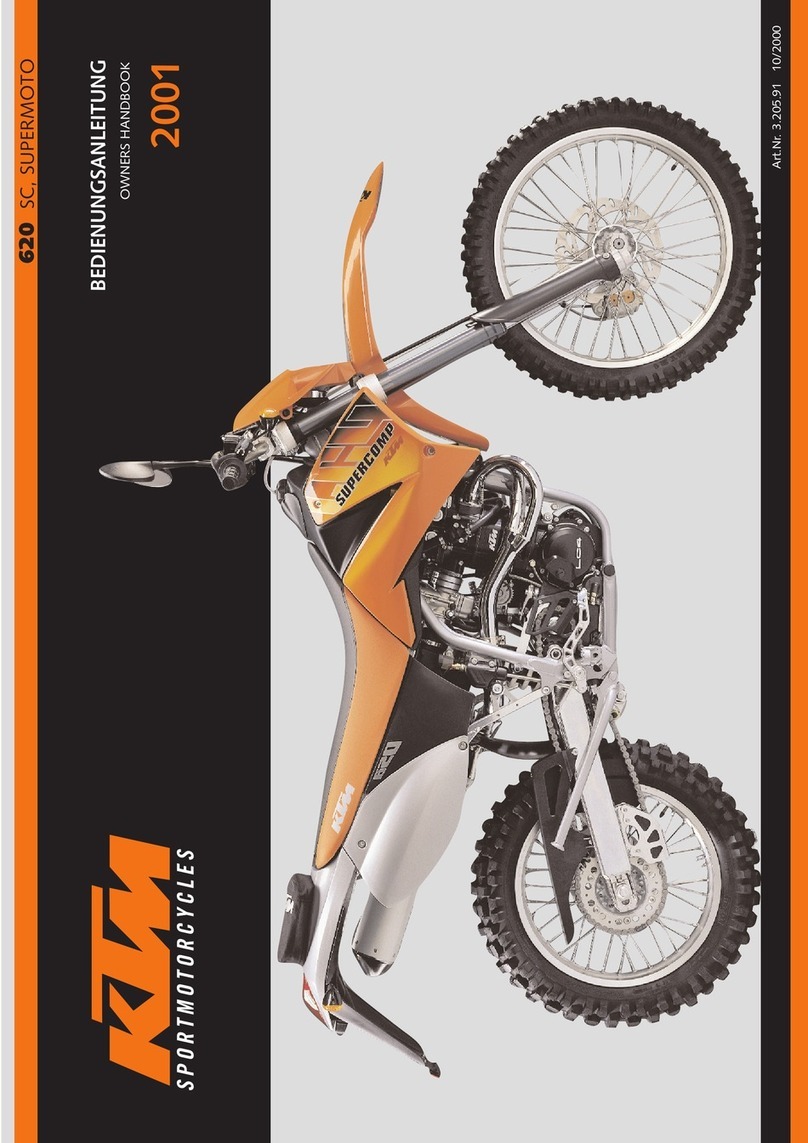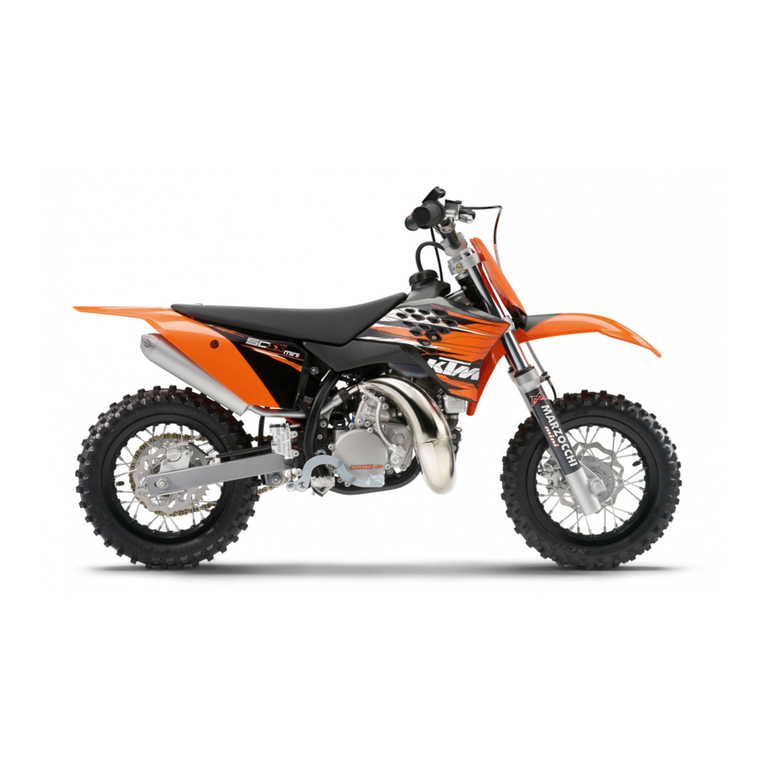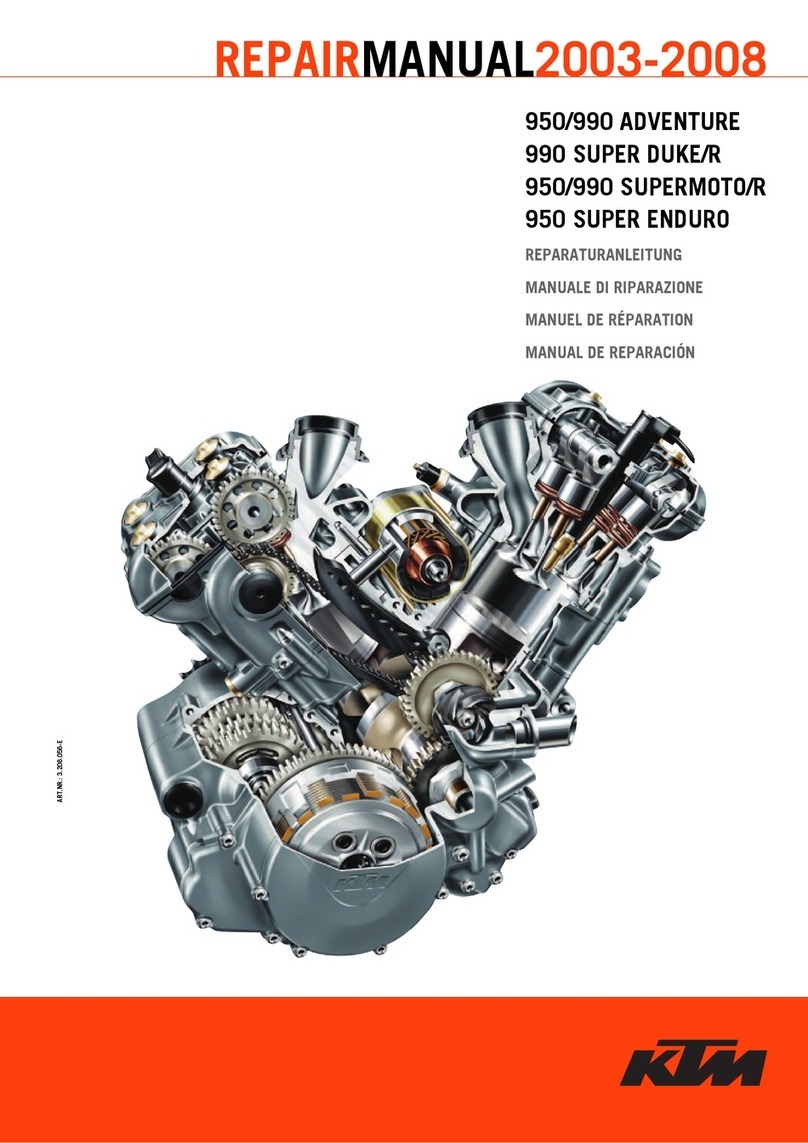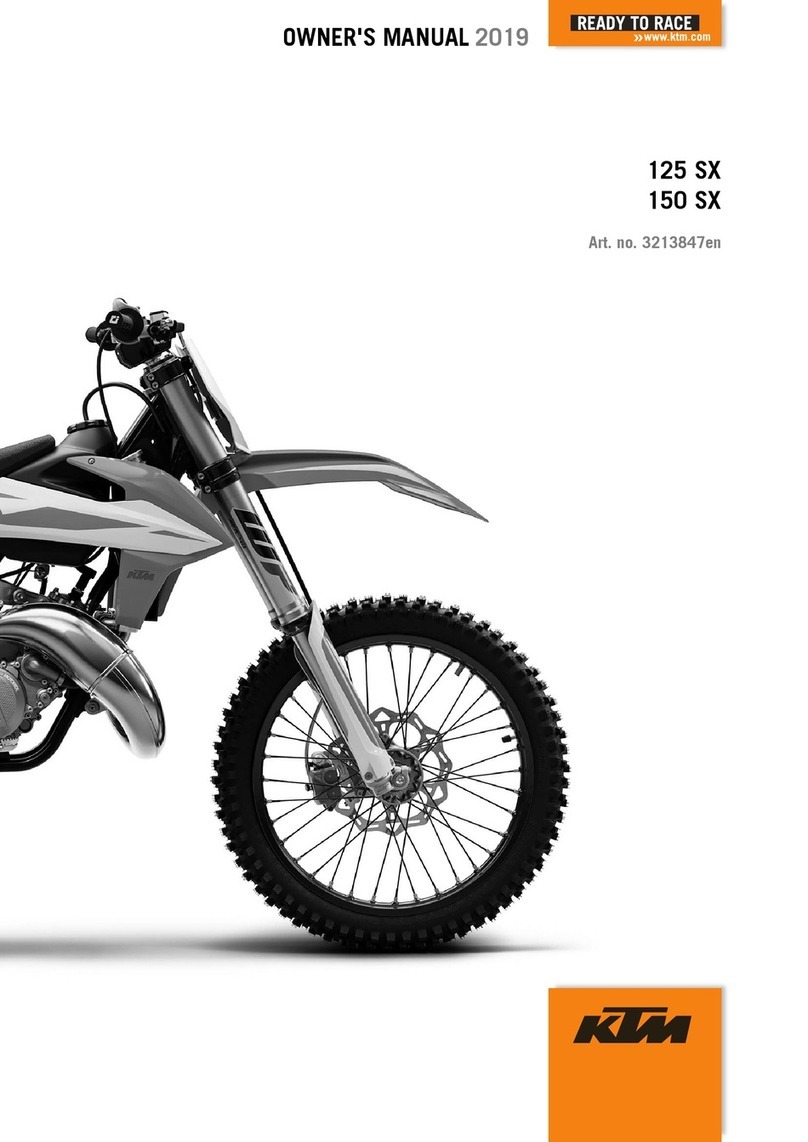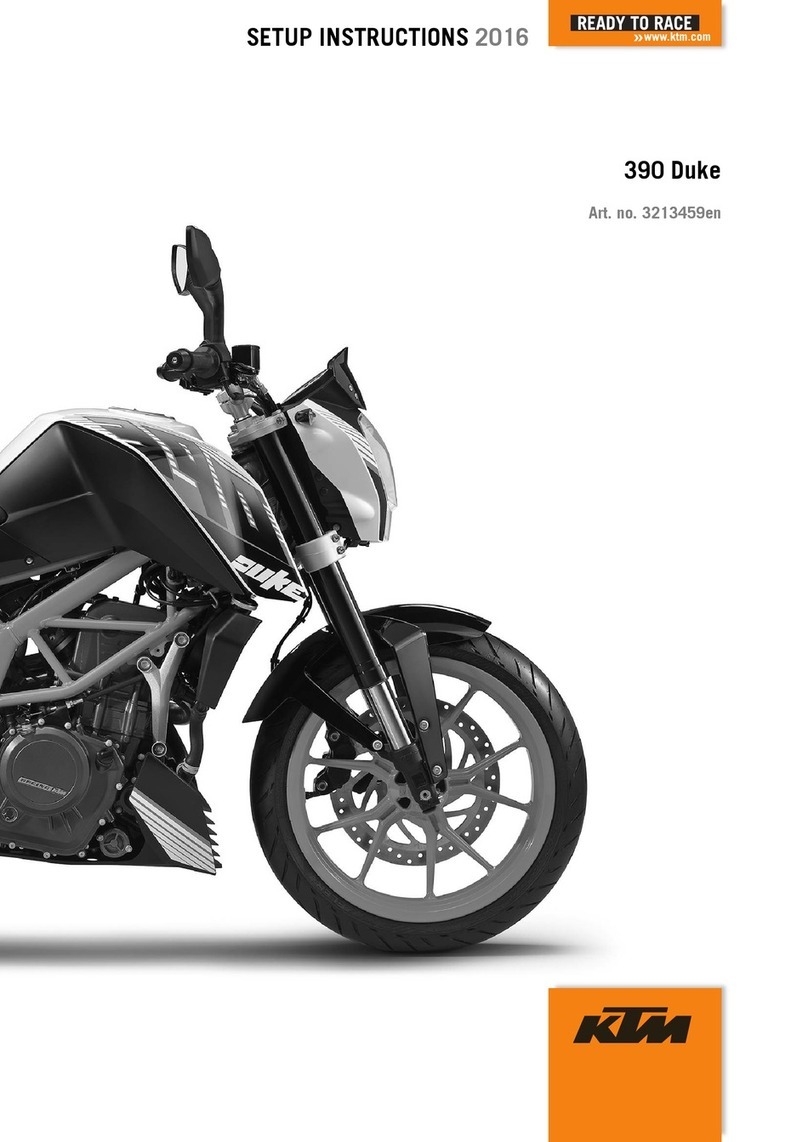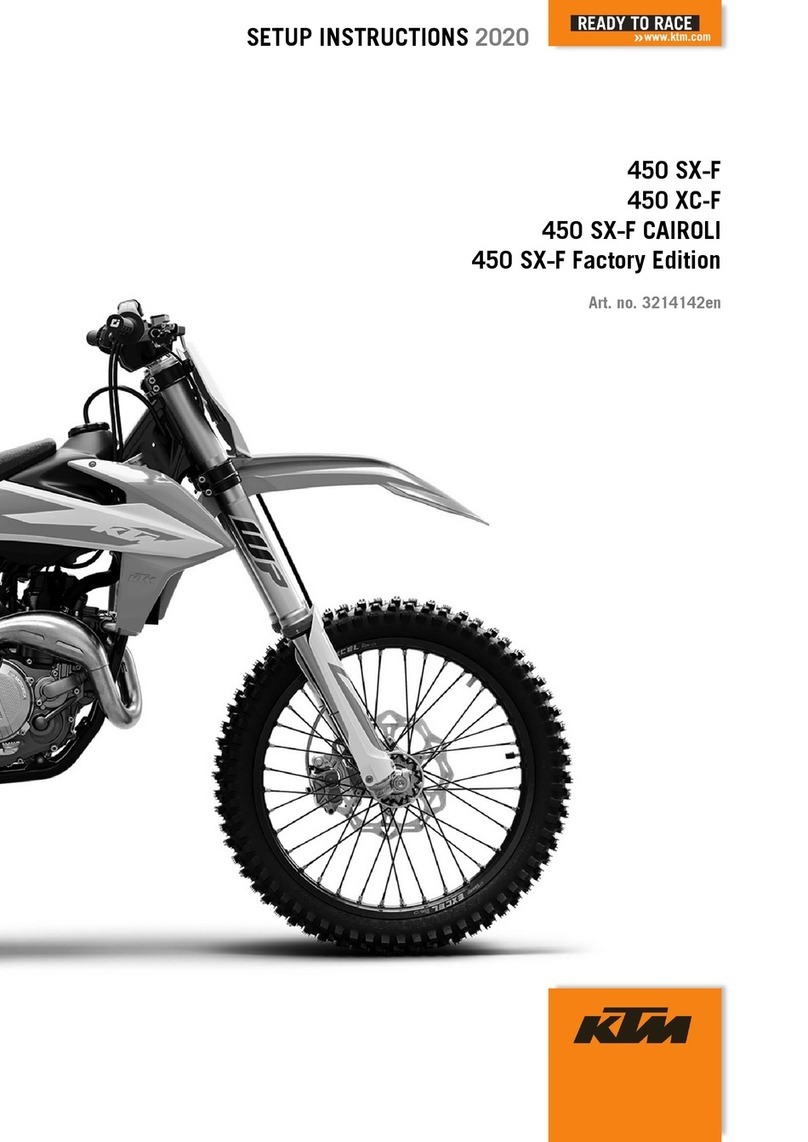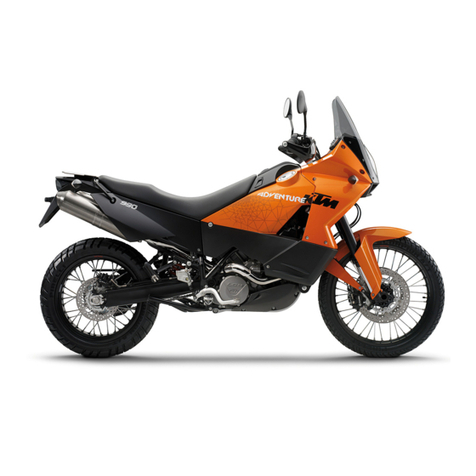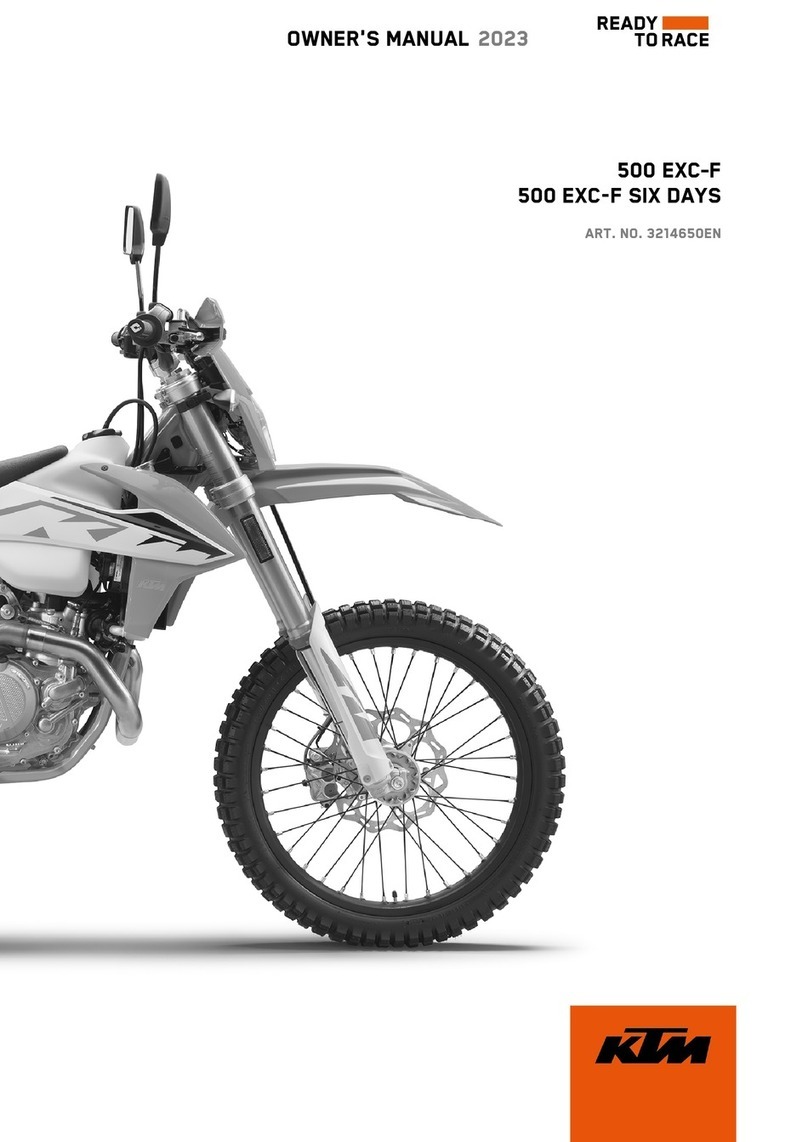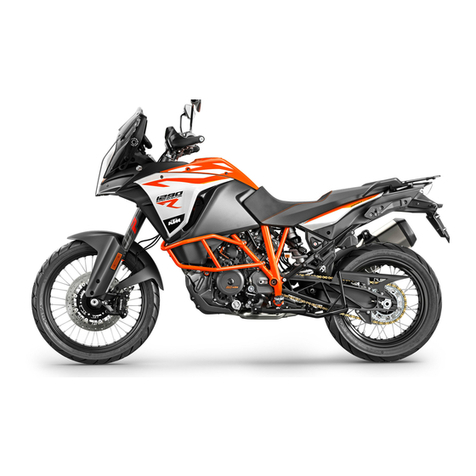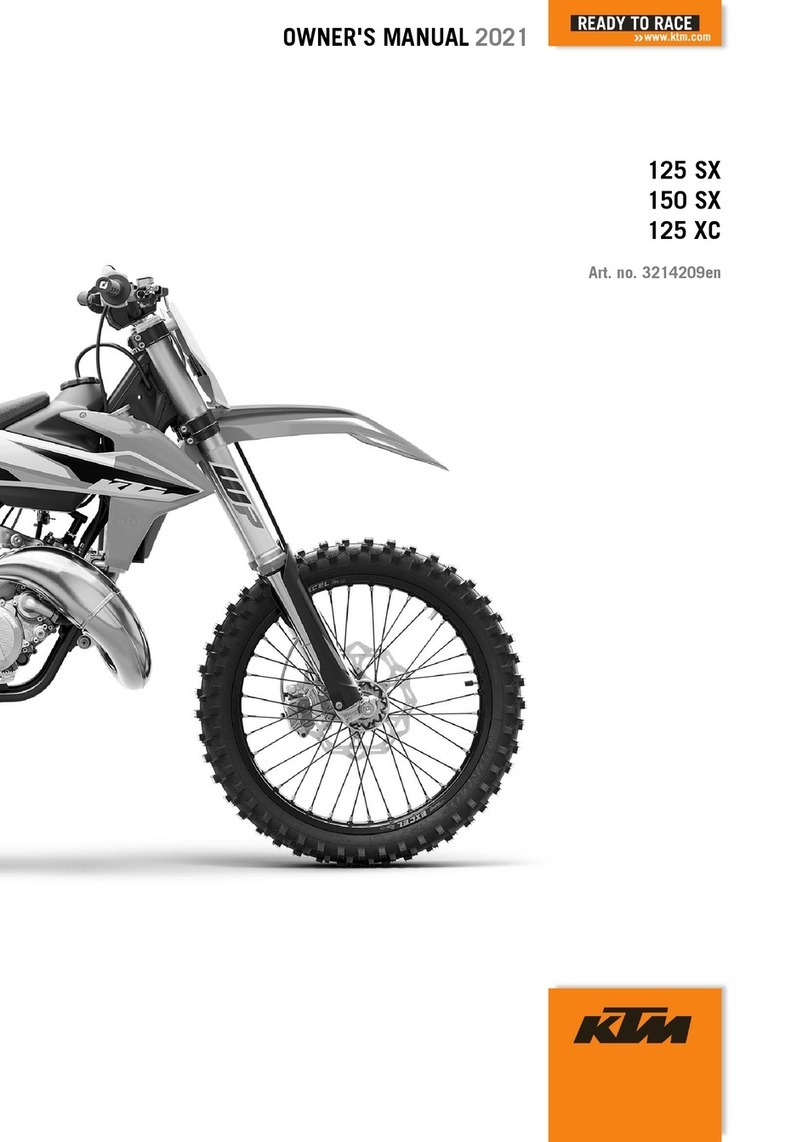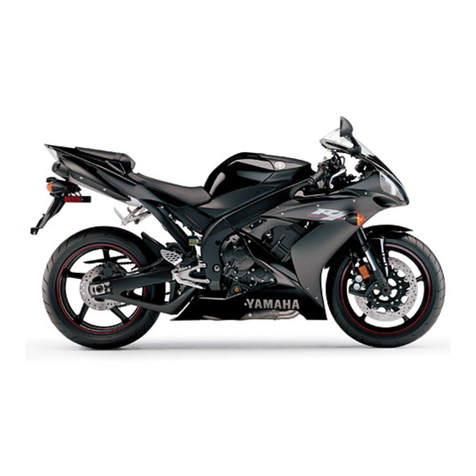
3 WORK 8
B00750-11
–Connect the negative cable of the battery.
–Position the negative terminal cover .
Finishing work
–Mount the seat. ( p. 5)
–Mount the passenger seat. ( p. 5)
–Set the clock. ( p. 9)
3.8 Opening the filler cap
Danger
Fire hazard Fuel is highly flammable.
–Never refuel the vehicle near open flames or burning cigarettes, and always switch off the engine first. Be careful that no
fuel is spilt, especially on hot vehicle components. Clean up spilt fuel immediately.
–The fuel in the fuel tank expands when warm and may emerge if overfilled. Follow the instructions on refueling.
Warning
Danger of poisoning Fuel is poisonous and a health hazard.
–Fuel must not come into contact with the skin, eyes, or clothing. Do not breathe in the fuel vapors. If contact occurs with
the eyes, rinse with water immediately and contact a physician. Immediately clean contaminated areas on the skin with
soap and water. If fuel is swallowed, contact a physician immediately. Change clothing that is contaminated with fuel.
Store fuel properly in a suitable canister and keep away from children.
Warning
Environmental hazard Improper handling of fuel is a danger to the environment.
–Do not allow fuel to get into the ground water, the ground, or the sewage system.
B00710-10
–Lift the cover of the filler cap and insert the ignition key in the lock.
Note
Danger of damage Ignition key breakage.
–To take pressure off of the ignition key, push down on the filler cap. Damaged
ignition keys must be replaced.
–Turn the ignition key 90° clockwise.
–Open the filler cap.
–Remove the ignition key.
3.9 Closing the filler cap
B00711-01
Warning
Fire hazard Fuel is highly flammable, poisonous and harmful to your
health.
–After closing the filler cap, ensure that it is locked properly. Change
clothing that has been contaminated with fuel. Immediately clean con-
taminated areas on the skin with soap and water.
–Close the filler cap.
–Push down the filler cap until the lock engages.

